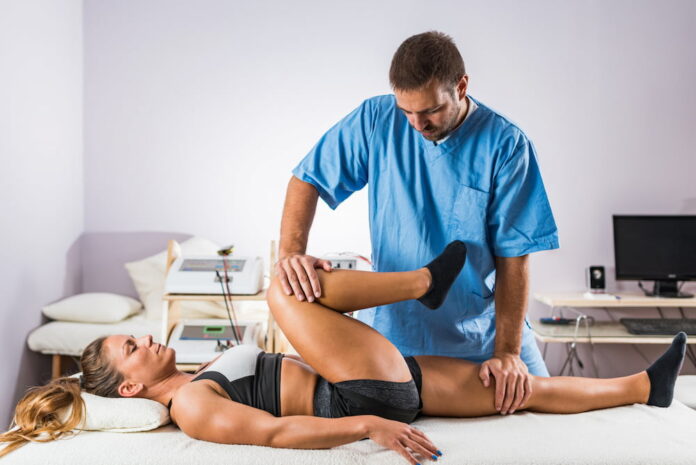Are you searching for ways to make your physical therapy practice even better?
Every physical therapy clinic manager knows that there are better ways to increase profits, boost customer satisfaction, and cut costs.
By finding the right therapy equipment management service, you can ensure that your team has what they need when they need it. You can even save money by sharing equipment with other physical therapists in your community.
But how do you know what the best physical therapy equipment is for your practice? Keep reading to learn more!
Evaluating Your Practice’s Needs
Take into account your patient demographic, budget, and space considerations. Considering equipment needs are essential to getting the most out of your practice.
Consult with a professional if needed to determine which items would be most beneficial. For instance, if you are into providing Occupational therapy, equipment like Range of Motion (ROM) and exercise tools, such as resistance bands, are crucial. The professionals may help you identify those tools that enable you to provide tailored outcomes for your clients.
Try to find equipment with features that can make your practice more efficient, such as adjustable height settings, ergonomic settings, automated features, and ease of use.
Consider the Quality
Quality equipment will last longer and provide more effective treatments. To ensure you get equipment with the best quality. It’s important to note how long the equipment has been in business, what warranties are offered, and what feedback customers are giving.
It is also a good idea to test the equipment in person to ensure it is of sufficient quality. Buy from trusted suppliers who specialize in physical therapy equipment or who have experience in this industry.
Choose the Right Type of Equipment
Physical therapy equipment can be broadly classified into three categories. These are diagnostic, therapeutic, and exercise equipment.
Diagnostic equipment helps physical therapists assess the patient’s condition. Therapeutic equipment is for treating specific conditions. Exercise equipment such as adjustable parallel bars is for muscle strength and flexibility.
Depending on the needs of your practice, you may need to purchase equipment from any of the categories or all of them.
Size and Portability
Some equipment is bulky and takes up a lot of space, while others are smaller and more portable. If your practice is small, you may want to consider purchasing more portable equipment that can be moved around easily.
On the other hand, if you have a larger practice, you may have more space and can purchase larger equipment. You also want to consider the portability of the equipment when transporting it to off-site locations or in-house visits.
Budget and Investment
Physical therapy equipment can be quite expensive, so it’s a must to set a budget before making a new equipment purchase. Consider the value of the equipment, what you can afford, and how it will affect your practice’s bottom line.
It’s also important to remember that while more expensive equipment may offer more features or be of higher quality. It may not always be the best fit for your practice.
Invest in the Best Physical Therapy Equipment Today
Overall, selecting the best physical therapy equipment for your practice requires research and careful consideration. Take the time to compare features and warranties, and make sure to ask for helpful advice from colleagues or peers.
Start taking a look at the choices available and select the best fit for your practice. Start building a better physical therapy practice today!
If you need any other advice, tips, tricks, and more, be sure to check out the rest of our blog today!
Read Also
- The Benefits of Contract Labor Staffing in HealthcareThe most successful healthcare facilities today aren’t just reacting to crises—they are building workforce resilience to withstand them. Unpredictable patient demand, coupled with persistent nursing shortages, has made the traditional staffing model obsolete. Relying on mandatory overtime to cover a sudden surge in capacity is a recipe for high turnover and rising employee burnout relief… Read more: The Benefits of Contract Labor Staffing in Healthcare
- Management Reinforcement for Healthcare Providers in a Shifting SystemHealthcare is changing faster than ever. So, providers are feeling the pressure to keep up. New technology, changing patient needs, and constant rule updates make it tough for managers to stay on top. Strong leadership helps teams work better, give great care, and stay happy in their jobs. Here’s how healthcare leaders can strengthen their… Read more: Management Reinforcement for Healthcare Providers in a Shifting System
- Why Effective Disinfection Remains the Foundation of Public HealthFrom hospitals and schools to transport hubs and food production sites, disinfection is central to breaking the chain of infection and protecting community health. The COVID-19 pandemic highlighted how crucial surface hygiene and environmental control are in reducing the spread of harmful microorganisms. Yet, beyond emergency response, routine and validated disinfection practices remain the cornerstone… Read more: Why Effective Disinfection Remains the Foundation of Public Health
- How to Navigate Your Medical Assistant Career PathBecoming a medical assistant can feel both exciting and a little stressful. This job lets you work closely with doctors and other healthcare workers to help patients. But with so many different paths to take, it can be hard to know where to start or how to plan your career. Wouldn’t it be nice to… Read more: How to Navigate Your Medical Assistant Career Path
- Benefits of Enrolling in Botox Training CoursesMany people want to enhance their skills in the beauty field, and one way to do that is through Botox training. With the rising popularity of Botox, enrolling in training courses can set you on a path to a rewarding career. If you are considering this option, you might be curious about the benefits that… Read more: Benefits of Enrolling in Botox Training Courses






